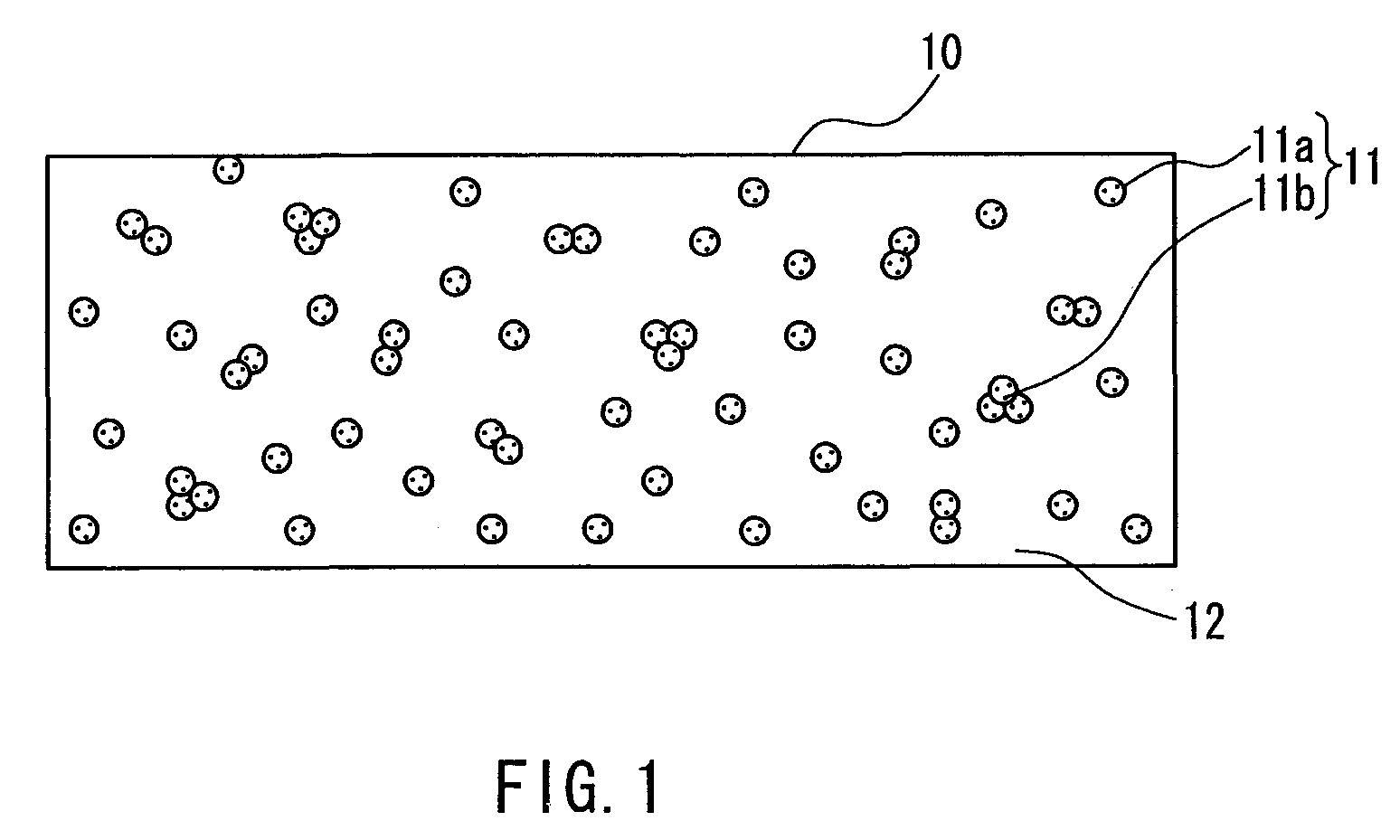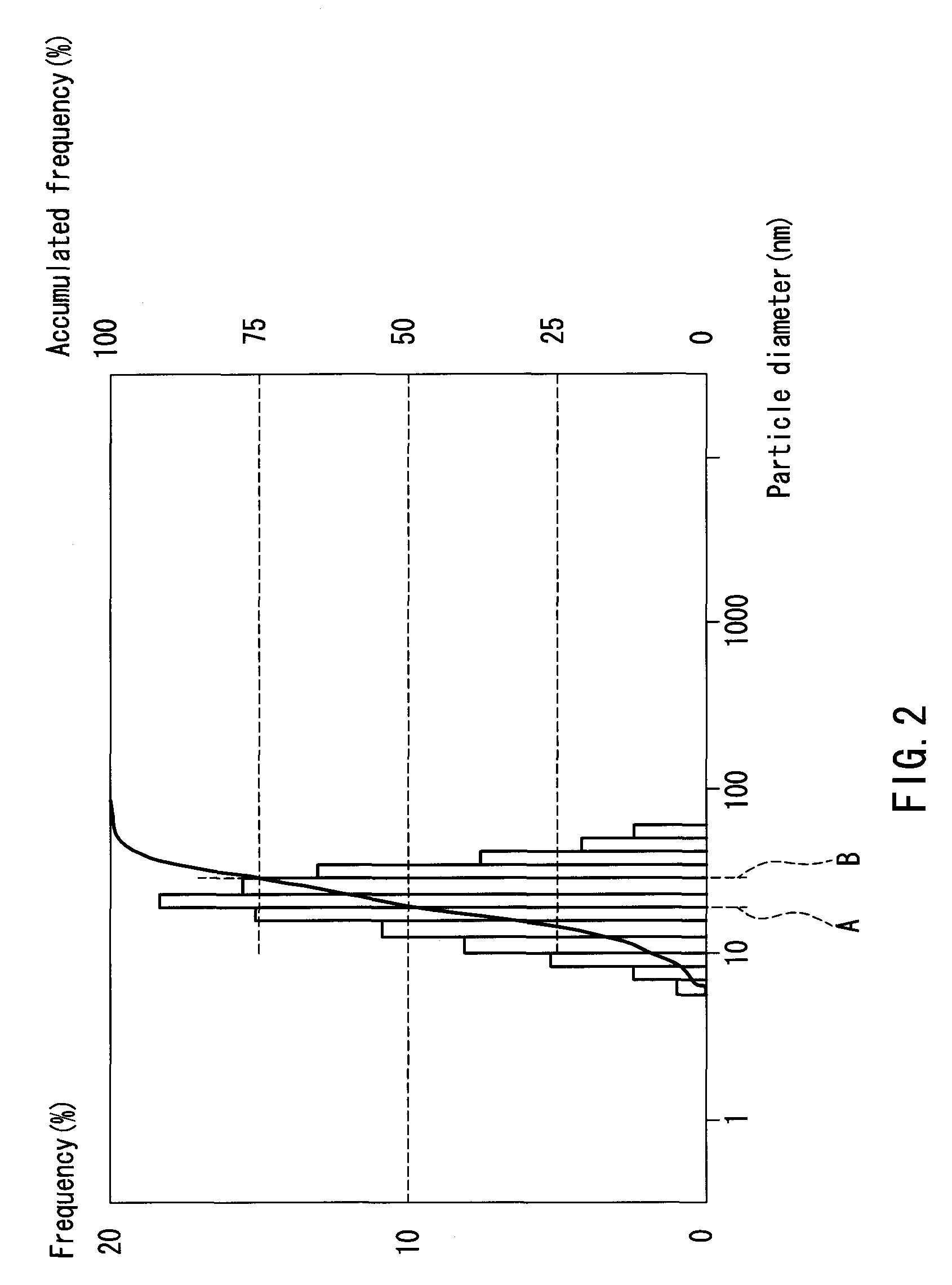Composite material and optical component using the same
a technology of composite materials and optical components, applied in the direction of optical elements, instruments, coatings, etc., can solve the problems of difficult processing of organic optical materials, difficulty in producing optical components, and becoming finer and more complex, and achieve excellent workability, high refractive index and low dispersion
- Summary
- Abstract
- Description
- Claims
- Application Information
AI Technical Summary
Benefits of technology
Problems solved by technology
Method used
Image
Examples
first embodiment
[0047]A composite material 10 according to the first embodiment of the present invention will be described with reference to FIG. 1.
[0048]The composite material 10 according to the first embodiment of the present invention is formed by uniformly dispersing inorganic particles (first inorganic particles) 11 containing at least zirconium oxide in a resin 12 serving as a substrate. Generally, the inorganic particles 11 include primary particles 11a, and secondary particles 11b, which are formed by a plurality of aggregated primary particles 11a. Accordingly, the inorganic particles 11 being uniformly dispersed in the resin 12 means that the primary particles 11a and the secondary particles 11b of the inorganic particles 11 are substantially uniformly dispersed in the composite material 10, without being unevenly distributed in any particular position in the composite material 10. In order for the composite material 10 to have favorable particle dispersibility, it is preferable that the...
second embodiment
[0082]A composite material according to the second embodiment of the present invention will be described with reference to FIG. 7.
[0083]A composite material 60 according to the second embodiment of the present invention is formed by uniformly dispersing first inorganic particles 11 containing at least zirconium oxide and second inorganic particles 13 having a composition different from that of the first inorganic particles 11 and having an Abbe's number νP of not less than 50 in a resin 12 serving as the substrate. Similarly to the first inorganic particles 11, the second inorganic particles 13 generally include primary particles 13a and secondary particles 13b, which are formed by a plurality of aggregated primary particles 13a. Accordingly, the first inorganic particles 11 and second inorganic particles 13 being uniformly dispersed in the resin 12 means that the primary particles 11a and the secondary particles 11b of the inorganic particles 11 and the primary particles 13a and se...
third embodiment
[0126]One embodiment of the optical component using the composite material according to the present invention will be described with reference to FIG. 10.
[0127]In the present invention, examples of the optical component that can be formed using the composite material in which inorganic particles containing at least zirconium oxide are dispersed in a resin include a lens, a diffractive optical element (e.g., a lens, a spatial low-pass filter or a polarizing hologram in which a diffraction grating is formed,), a solid-state image sensor including an optical waveguide, optical fiber, an optical disk substrate, an optical filter and an optical adhesive. Among these, FIG. 10 is a cross-sectional view showing an example of a lens in which a diffraction grating pattern is formed on its surface. It should be noted that the lens shown in FIG. 10 is merely an example, and the present invention is applicable to various other forms.
[0128]A ring-shaped diffraction grating 82a is formed on one si...
PUM
| Property | Measurement | Unit |
|---|---|---|
| Length | aaaaa | aaaaa |
| Fraction | aaaaa | aaaaa |
| Nanoscale particle size | aaaaa | aaaaa |
Abstract
Description
Claims
Application Information
 Login to View More
Login to View More - R&D
- Intellectual Property
- Life Sciences
- Materials
- Tech Scout
- Unparalleled Data Quality
- Higher Quality Content
- 60% Fewer Hallucinations
Browse by: Latest US Patents, China's latest patents, Technical Efficacy Thesaurus, Application Domain, Technology Topic, Popular Technical Reports.
© 2025 PatSnap. All rights reserved.Legal|Privacy policy|Modern Slavery Act Transparency Statement|Sitemap|About US| Contact US: help@patsnap.com



